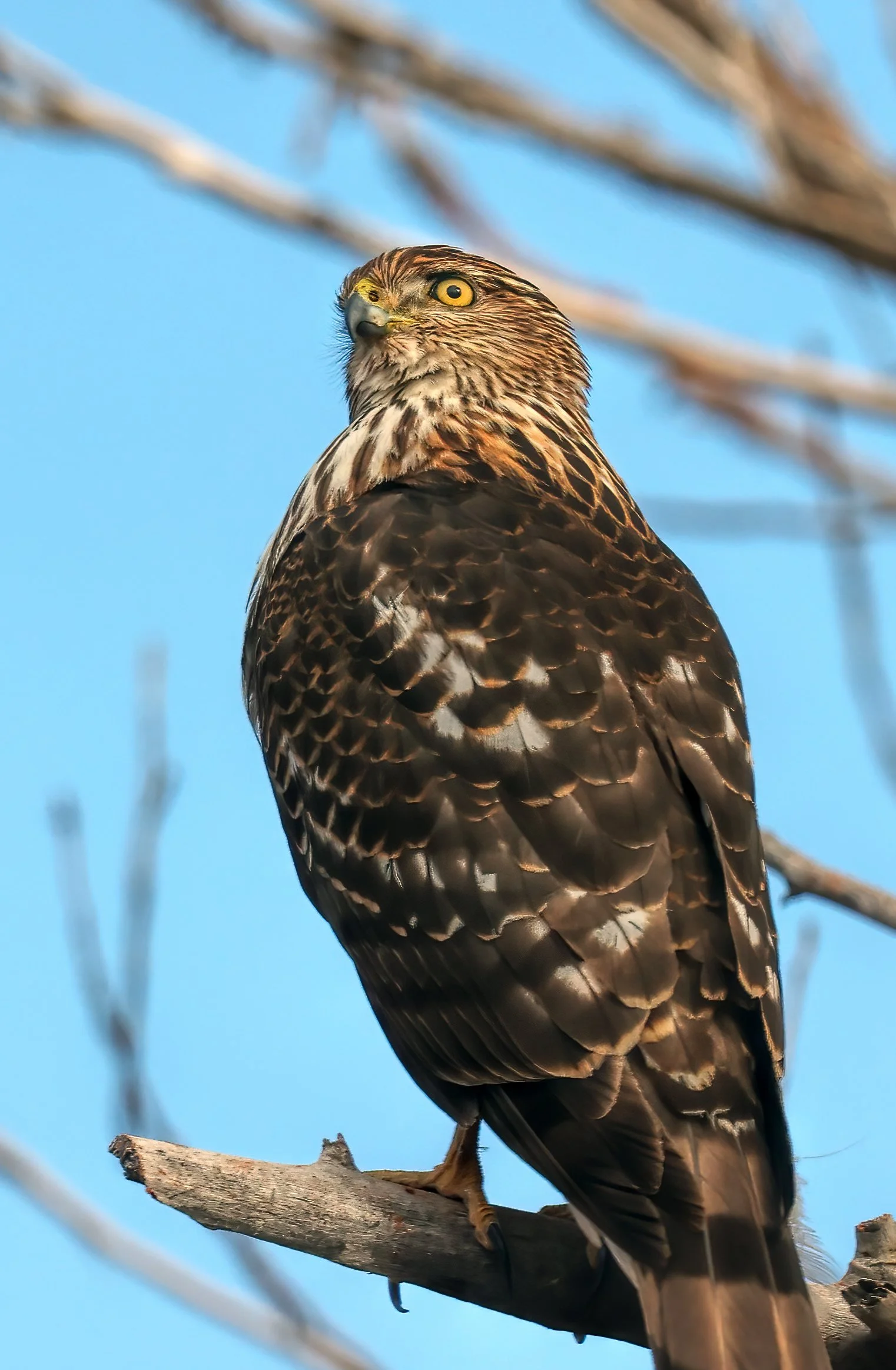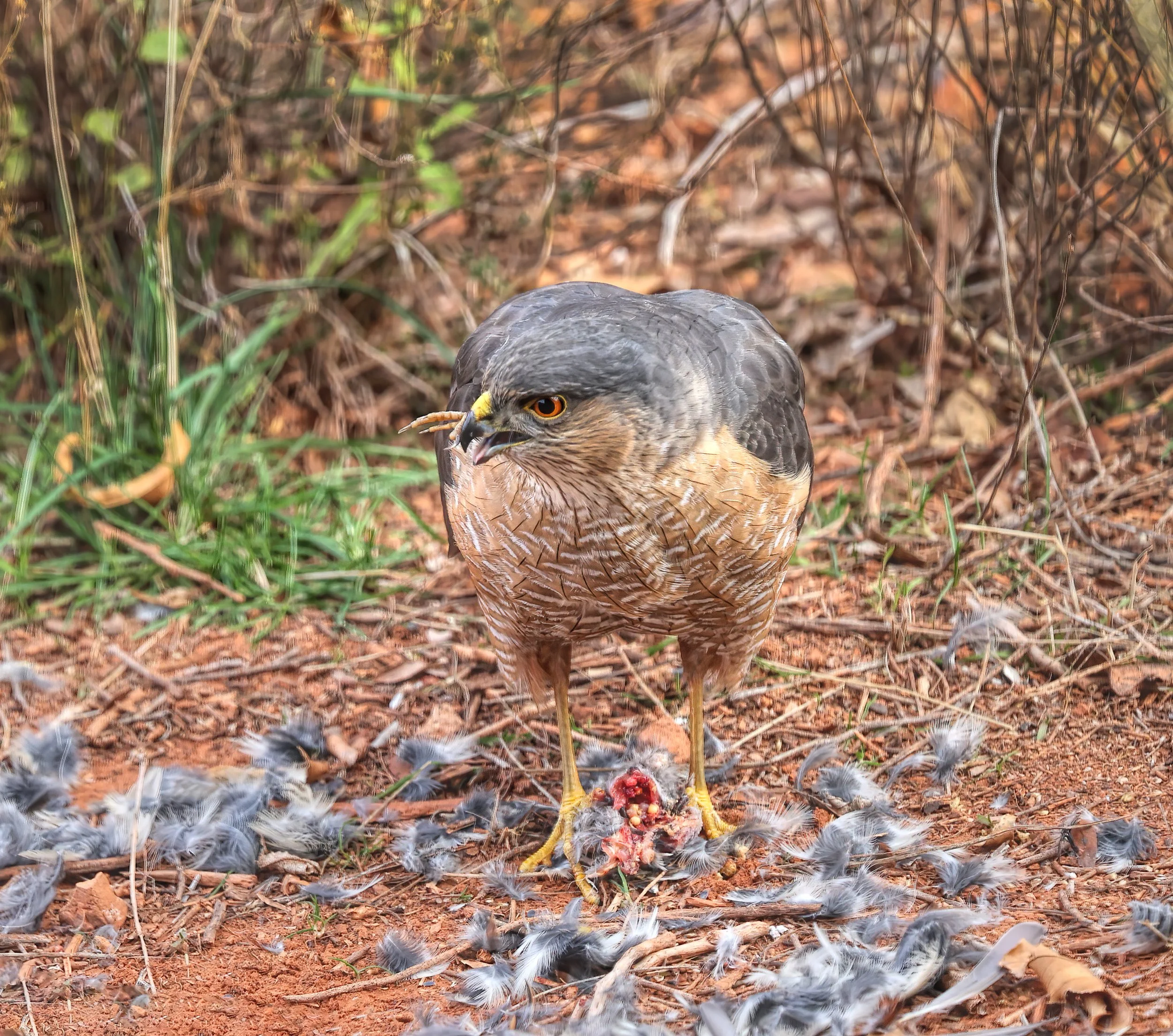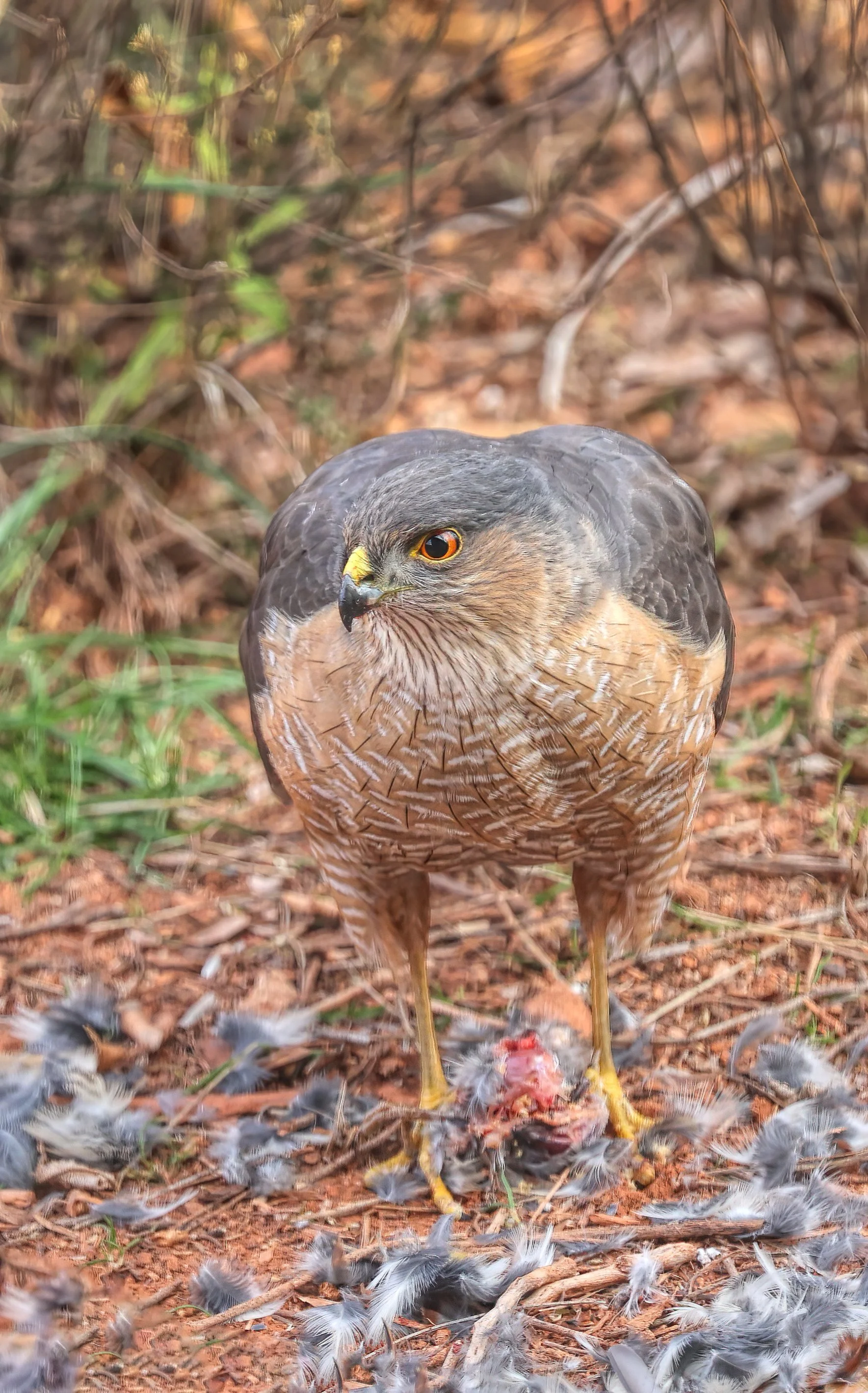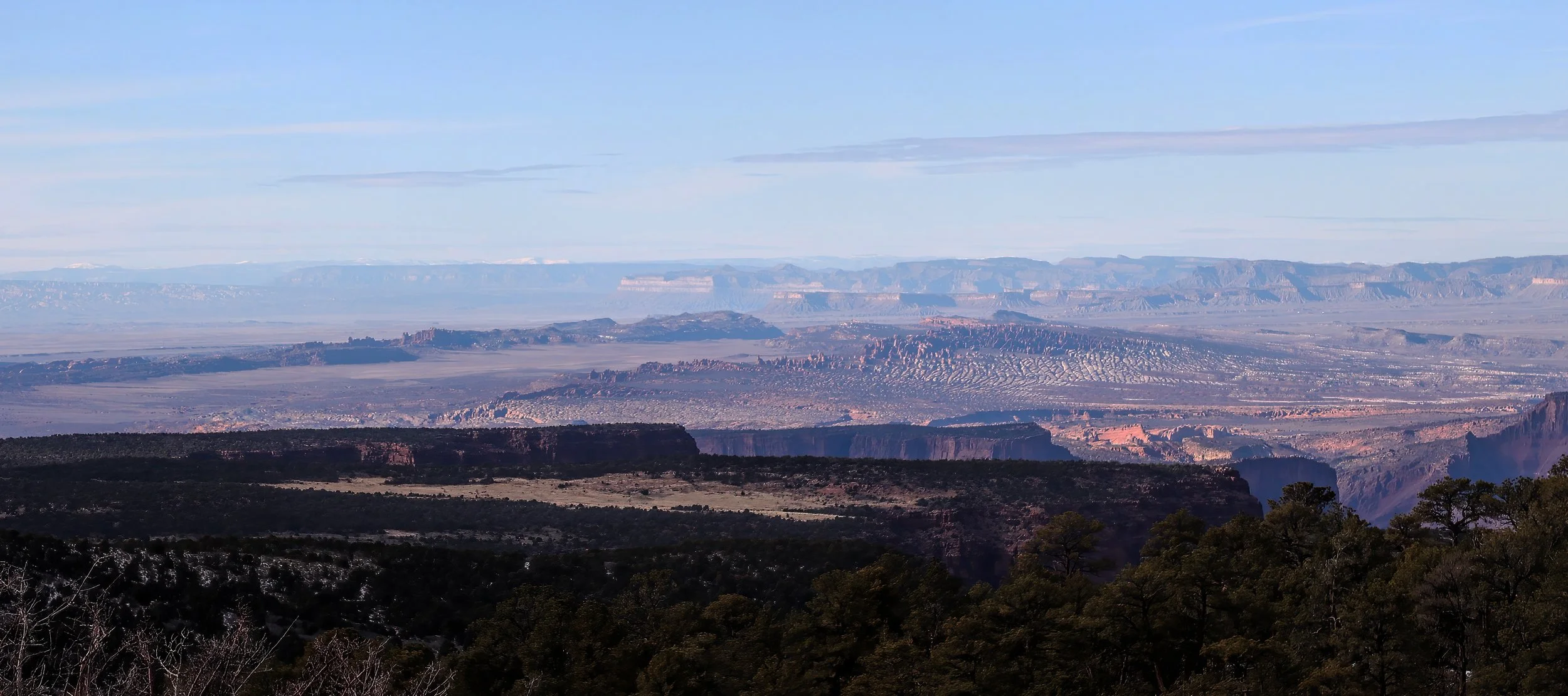this winter is occurring right now in Castle Valley, following nearly a half-inch (~13 mm) of rain earlier in the day.
A pair of Western Meadowlark (Sturnella neglecta) bickering in the snow.
this winter is occurring right now in Castle Valley, following nearly a half-inch (~13 mm) of rain earlier in the day.

A pair of Western Meadowlark (Sturnella neglecta) bickering in the snow.
that may bring snow and rain to the valley tomorrow. Here’s sunset this evening.

from 1964, a vehicle is lifted onto the summit of Castleton Tower, an operation that took about an hour to achieve. This calm afternoon allowed the stage to be set with the heavy lift of a blue pickup truck, but the weather is so poor and overcast I’m guessing that photography won’t occur for another day or so under better lighting conditions.
For a trip down memory lane, here’s the classic 1964 Chevy Impala commercial.



5 January 2026 UPDATE: The blue Chevy (Silverado?) pickup truck sits atop Castleton Tower the afternoon following the airlift.
From the special use permit issued by the BLM: “Radical Media has filed an application with the Bureau of Land Management (BLM) Moab Field Office (MFO) for a 2-day film permit for the top of Castleton Tower in Grand County, Utah. The filming would occur between January 1, 2026 and January 7, 2026. Filming would involve recreating a scene from a 1964 car commercial where a shell of a vehicle is placed on top of Castleton Tower with an actor. The vehicle and actor would be delivered to the top of the tower via helicopter. Radical Media would also film a double of the vehicle driving on State Route (SR) 128 and the La Sal Loop Road through Castle Valley, Utah. Intermittent traffic control would be used for the driving scenes. Helicopter and crew staging would take place on private property and would include 30 cast and crew members and ten vehicles. A total of seven people would be airlifted to the top of Castleton Tower for filming. The vehicle placed on the top of Castleton Tower would be the shell of a vehicle. Each wheel would be equipped with a separate hand brake for safety. The vehicle would also be anchored to the tower by a professional rigging team. The Castleton Tower trail would be closed for 2 days during the filming period. The closure would be posted at trailheads in the vicinity of Castleton Tower as well as at local climbing shops around Moab (see Attachment 1). A BLM-approved monitor would be on site for the duration of filming activities.”

6 January 2026 UPDATE: Cleaning up and going home. Peace and quiet once again descends upon our bucolic community.
at lunch time.

Cooper’s Hawk (Astur cooperii).
with determination in its eyes.

Cooper’s Hawk (Astur cooperii).
to the new year sees the arrival of some moisture to the valley. About 0.1 inches (2.5 mm) of rain has fallen by midday.

Atmospherics against Porcupine Rim.
under very dry and mild conditions with an unimpressive snowpack in the high country. Look closely, the rising waxing gibbous Moon can be seen in the center of this image.


Snowpack in the La Sal Mountains is about half normal at the end of the calendar year 2025.
between meals.

Juvenile Cooper's Hawk (Astur cooperii).
of the feeding stations is occurring by a nomadic gang of jays. The image below captures only a few of the blue brutes and the regulars don’t stand a chance when they’re around.

Pinyon Jay (Gymnorhinus cyanocephalus).
behind the La Sal Mountains this morning.

from a high perch, this raptor is now being observed several times a day near the feeding stations.

Cooper’s Hawk (Astur cooperii).
stops by the watering hole this morning to tank up.


Northern Flicker (Colaptes auratus).
of this successful hunter as it enjoys a luncheon consisting of dove tartare. Everybody’s gotta eat.

Well fed Sharp-shinned Hawk (Accipiter striatus).

just flushed several finches from the feeder, failing in its ambush late in the day. Small but fierce.

Northern Shrike (Lanius borealis).
was held today at the state line between Colorado and Utah. I successfully launched and recovered three mid-power rockets on a calm and sunny day in the Grand Valley. Always enormous fun.

The exhaust plume of a high-power rocket paints its trajectory as it heads skyward with the Book Cliffs serving as a scenic backdrop to the remote launch site.

Doorknob lifting off the rod on a F15-4 engine.

Nike Smoke Pro leaping off the pad on a composite F20-7W engine.

Nike Smoke Pro under chute during descent.

The mid-power Cherokee Pro heading up on a composite G77-7R engine to an apogee of 1,672 feet (510 m).
is populating the valley in great numbers this winter, with a large “conspiracy” visiting the feeding stations on a daily basis.

Common Raven (Corvus corax).
displayed on a bedding plane on a fallen slab from the Chinle Formation (Upper Triassic (237-201.3Ma)) near Courthouse Wash. This sedimentary structure formed as muddy sediment dried and contracted due to reduction in water content, then buried and preserved with sandy sediments from a subsequent flood event.

as seen from a lofty perch above Castleton on a clear and cold early winter day.

The Henry Mountains, 90 miles (145 km) distant. From left to right (south to north): Mount Hillers (10,741 ft (3,274 m)), Mount Pennell (11,413 ft (3,479 m)) and Mount Ellen (11,527 ft (3,513 m)).

The collapsed salt-cored anticline in the heart of Arches National Park, 25 miles (40 km) distant. The Book Cliffs are 39 miles (63 km) distant.
spies a potential target this morning.

Cooper's Hawk (Astur cooperii).
illuminates the conical landform like a mural painting.
Click on image to supersize.